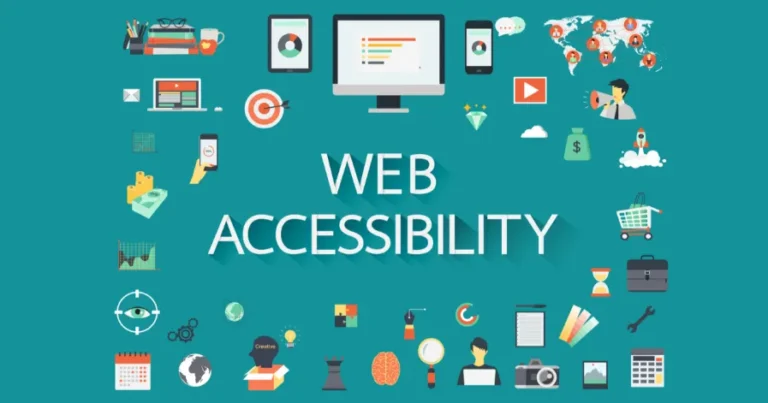The Internet has become so widespread worldwide that almost everyone uses it for daily tasks. From purchasing clothes or booking a trip to scheduling a dentist appointment, we can do almost anything with our phones or laptops.
Everyone should be able to connect and share information on their devices, but sometimes, that option is not available to all users.
If you are a web developer or designer, it is your ethical responsibility to create inclusive online experiences that embrace everyone, regardless of their disabilities.
In this article, we’ll share valuable information regarding web development accessibility
and how to successfully ensure that your website is accessible to all users.
What is web accessibility?
Web accessibility refers to the inclusive practice of ensuring that people with disabilities can engage with, understand, and navigate websites effectively.
It is not just about compliance but about providing equal access and opportunity for all users. If you design your website with inclusivity in mind, you will not only expand your audience but contribute to a more non-discriminatory online environment.
Why is accessibility important in web development?
Web developers play a paramount role in creating a more inclusive online environment. It is crucial to work on accessibility from the first step of website creation.
Incorporating accessibility from the start of the project saves a lot of time and resources because having an inaccessible site can be more costly and challenging. By integrating accessibility practices into the design and coding phase, you will be able to build platforms that are suitable to diverse user needs proactively.
This whole process is significant for many essential reasons. It is about addressing different ways people interact with technology. This approach doesn’t just enhance the usability of the website, but it grants equal access to all.
Main principles of website accessibility
- The first thing you need to consider is that your content needs to be perceived by all users. Use alternative text for images, provide subtitles and captions for video material, and customize color contrast to be easily readable.
- Your website needs to be operable, meaning it needs to be easily navigable and operable using many devices and web browsers. For instance, keyboard navigation should be customized to be easily typed for everyone. Just make sure to avoid elements that can cause seizures or physical reactions, as some people have health issues with them.
- Also, to make your website even more accessible, you should try to create content that is easy to understand and navigate. The best practice is to use clear and concise language, easily predictable layouts, and generally intuitive navigation to help users understand and interact with your website.
- Lastly, you need to consider building your website to be compatible with different assistive technologies that can provide some users with additional support. To enhance compatibility even more, make sure to use standardized code and HTML.
How to make your business website accessible to all users
To improve your website’s accessibility, follow these tips:
- As stated previously, using proper HTML structure is vital to ensure readable document structure. It is best to use headings, bullets, lists, and labels accordingly to help out screen readers and assistive technologies.
- Another essential aspect is keyboard functionality. This means that all functionality can be operated with the keyboard alone. This is very important for users who are not able to use a mouse or touch screen due to their disabilities, so this will enable them to operate effortlessly.
- Include alt-texts to describe all your images. This helps users with visual disabilities understand the context of the images. Additionally, captions and subtitles are required for videos and multimedia material if you want to have an accessible and inclusive website.
- To ensure that your content is visible and readable to all site visitors, make sure to maintain adequate color contrast between text and background. This will enable users who struggle with color blindness or low vision to read without problems.
- Ultimately it is important to ensure that everything is working properly and that everything is done right. Consider using accessibility tools and asking users with disabilities for feedback to identify and solve any potential issues.
Final thoughts
Providing every potential site visitor with a chance to explore your website isn’t only beneficial for you, as it expands your audience, but it is also highly ethical. This is not a one-time task but an ongoing practice that you constantly need to update and change to fit the newest standards.
This excellent practice not only benefits users with disabilities but also improves everyone’s overall user experience. If you design your website to be inclusive, you will contribute to a healthier and friendly web environment that fits all!
